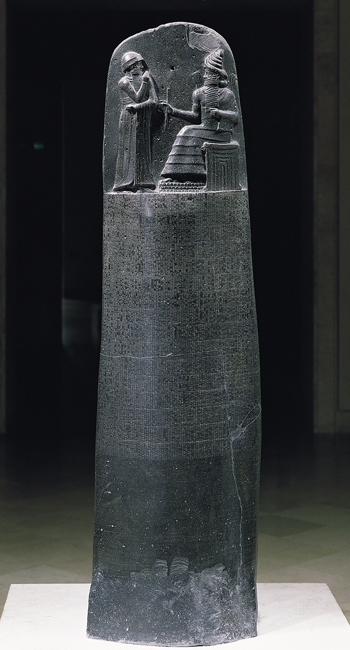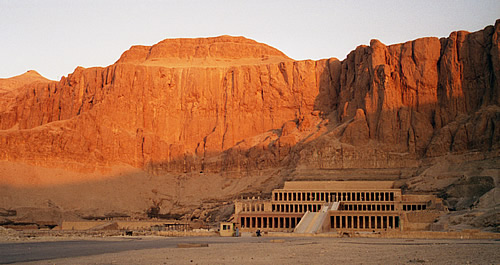Cards In This Set
| Front | Back |
 |
White Temple and Zigguraut at Uruk
|
 |
Warka Vase from Uruk
-3200-3000BCE
-relief sculpture
-registers (frieze) to separate parts of the story
-hiearchy of scale
-composite view
|
 |
Victory Stele of Naram-Sin
-Akkadian
-2254-2218BCE
-Found at Susa (Iran) where it was taken by the Elamites
-Originally set up in Sippar
-made of Pink sandstone, 6’7’’
-Commemorates victory over the Lullubi.
-No divistion or registers
-Sun-like stars represent astrological deities “smiling down”-Reason to show these kinds of scenes – to boast about what they’ve done
|
 |
Stele with law code of Hammurabi found in Susa, Iran ca. 1780 BCE
-Old Babylonian
-God shamash gives Hammurabi the measuring rod and ring (coiled rope) of kingship
-3500 lines of cuneiform, 282 laws
-made of basalt, 7’4’’
-shamash wears a horned crown
-shamash is shown with diagonal curles, and hat shown in profile view, experimentation is starting to break out of the traditional mold, but still holds mostly true to the Sumerian techniques.
|
 |
Statuettes of two worshipers
-Sumerian
-ca.2700BCE
-votive figures
-Gypsum inlaid with shell and black limeston
-serve as constant worshipers to the Gods
-simple forms, cylindrical, large eyes and unibrows, disporportionate relationship because hands are so small while eyes are so large
|
 |
Lamassu (human-headed, winged bull)
-from citadel of sargon II
-ca.720-705BCE
-limestone
-served to ward off king's enemies
-combine front view of the animal at rest with side view of it in motion
-early artist attempt at conceptual picture
|
 |
Assyrian archers pursuying enemies
-Assyrian
-Northwest palace of Ashurnasirpal II
-ca. 875-860BCE
-gypsom
-compressing distances, scale of figures larger in respect to architecture
|
 |
Palette of King Narmer from Heirakonpolis, Egypt
-Egyptian
-ca. 3000-2920BCE
-slate
-earliest labled work of historical art
-ceremonial palette, used for mixing make-up
-registers, hiearchy of scale, composite view
|
 |
Stepped Pyramid of Djoser
-Imhotep
-Egyptian, from Saqqara, Egypt
-Dynasty III
-ca. 2630-2611BCE
-limestone
a step pyramid is a structure over an underground burial chamber
-this particular step pyramid started as a mastaba and then became a pyramid and then was increased in size.
|
 |
Great Pyramids of Gizeh
-Egypt, Dynasty IV
-from left: menkaure ca. 2490-2472BCE, khafre ca. 2520-2494BCE, Khufu ca. 2551-2528BCE
|
 |
Great Sphinx
-Gizeh, Egypt, Dynasty IV
-ca. 2520-2494BCE
-sandstone
|
 |
Khafre
-Gizeh, Egypt, Dynasty IV, ca. 2520-2494BCE
-Diorite
-very block-like in form
-resting place for the ka if the mummy is disinigrating
|
 |
Ti watching a hippopotamus hunt
-relief in the mastaba of Ti
-Saqqara, Egypt, Dynasty V
-ca. 2450-2350BCE
-painted limestone
-grid format to establish human figure, helps proportionate the body parts and represent a human figure.
|
 |
Mortuary temple of Hatshepsut
-Deir el-Bahri
-Egypt, Dynasty XVIII
-ca. 1473-1458BCE
-limestone
-200-some statues of the Pharaoh would have surrounded the temple
-Other Pharaoh’s temple was once beside Hatshepsut’s temple, when her stepson took over, he crammed his temple in between the two temples.
-post and lintel system
|
 |
Hatshepsut with offering jars, from the upper court of her mortuary temple
-Deir el-Bahri
-dynasty XVIII
-ca. 1473-1458BCE
-anatomically this statue is shown as male
|



